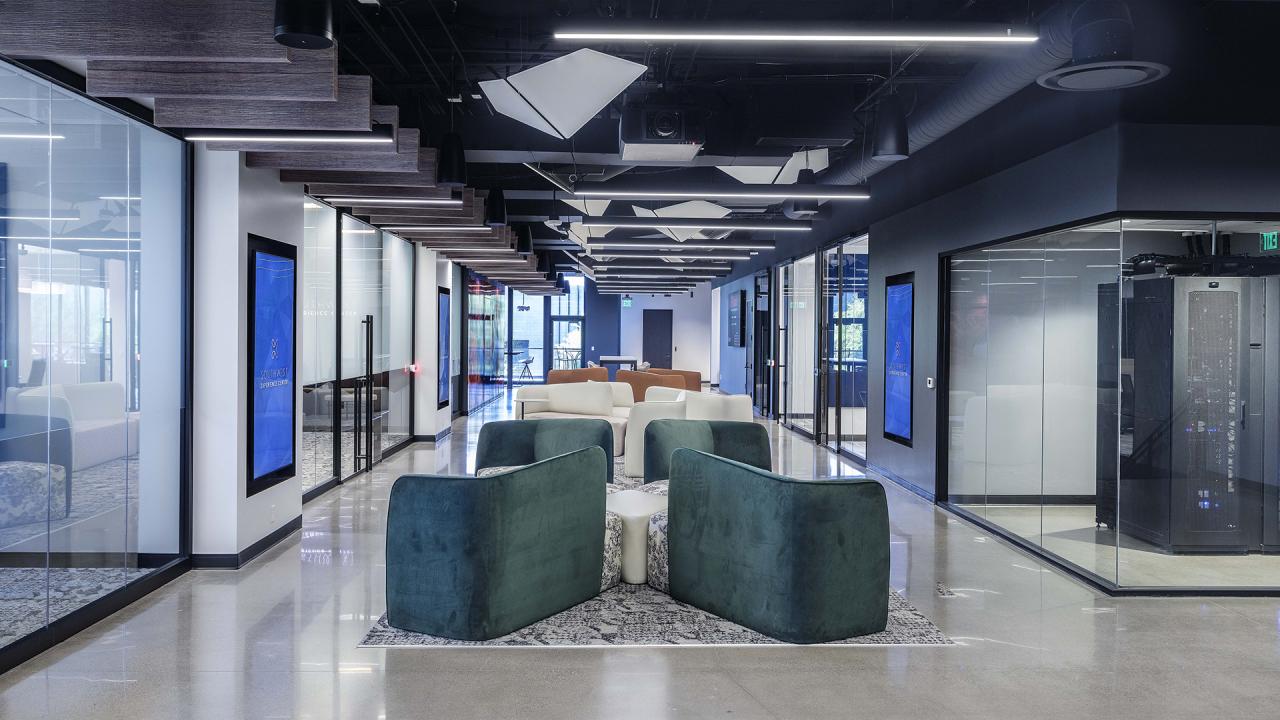The modern enterprise is rapidly shedding the constraints of traditional communication silos and dated, non-integrated software stacks. To secure high-value Google AdSense revenue from highly competitive keywords like “Unified Communications as a Service (UCaaS),” “Collaborative AI Tools,” and “Zero Trust Collaboration,” organizations must not just adopt new collaboration software, but strategically implement a unified, intelligent collaboration ecosystem. This ecosystem, driven by sophisticated Generative AI and Agentic AI, transcends basic video and chat to deliver predictive insights, automated action, and immersive teamwork across hybrid environments. This comprehensive article explores the features, security standards, and strategic value of the next-generation collaboration tools being rigorously tested for the 2025 enterprise.
The Critical Need for Unified Intelligence

The rise of the permanent hybrid workforce has exacerbated the problem of context fragmentation. Information is scattered across email, chat, project boards, and cloud documents, leading to pervasive latency, decision paralysis, and the immense financial burden of context switching.
A. The Cost of Context Fragmentation
When employees waste time searching for documents, deciphering stale email chains, or trying to piece together decisions made in different applications, the operational cost (and subsequent TCO) skyrockets.
Key Financial Consequences of Disjointed Collaboration:
A. Reduced Time-to-Action: Delays in accessing critical information (e.g., customer feedback, inventory status) slow down response times for sales, service, and operations teams, directly impacting revenue.
B. Increased Human Error: Decisions based on incomplete or outdated information—pulled from siloed tools—lead to costly mistakes in supply chain management, financial reporting, and customer handling.
C. High Employee Attrition Risk: Frustration with cumbersome, non-intuitive digital tools is a major driver of low Digital Employee Experience (DEX), leading to burnout and the loss of valuable skilled talent.
D. Unmanageable Security Surface: Every separate, non-governed application, especially for guest access and file sharing, expands the enterprise’s vulnerability landscape, increasing the risk of data breaches.
B. Defining the Unified Collaboration Platform (UCP)
The new generation of collaboration tools—often termed UCaaS (Unified Communications as a Service) or DEX Platforms (Digital Employee Experience Platforms)—are designed to be intelligent orchestrators of work, not just communication channels.
Core Pillars of the New UCP:
A. API-First Integration: The platform must offer deep, bi-directional integrations with core business systems (ERP, CRM, HRIS) using open, robust APIs, ensuring the collaboration tool is always working with real-time enterprise data.
B. AI-Native Functionality: AI features are not add-ons; they are embedded into the communication flow (e.g., real-time transcription, automated summarization, instant follow-up task creation).
C. Omnichannel Convergence: Voice, video, persistent chat, email, and document co-creation must exist within a single, consistent user interface, eliminating the friction of switching applications.
D. Immersive Ready: The platform must support next-generation collaboration modalities, including Extended Reality (XR) for virtual meeting rooms, spatial computing, and digital twin interaction.
Cutting-Edge AI Features Being Tested in Collaboration Tools

The most impactful innovations—and thus, the highest value features—revolve around Cognitive Collaboration. AI is moving beyond simple transcription to become an active, intelligent participant in the workflow.
A. Generative AI for Cognitive Assistance
Generative AI instantly synthesizes context and drafts responses, drastically reducing the time spent on administrative communication tasks.
Tested GenAI Collaboration Features:
A. Meeting Summarization and Action Item Generation: The AI not only transcribes a video call but automatically identifies key decisions, flags open questions, and assigns ownership and deadlines, immediately pushing these tasks to a connected project board (e.g., Jira or Asana).
B. Contextual Response Drafting: In chat or email, the AI analyzes the entire thread history (including linked documents and past project notes) to draft a human-like, contextually accurate response that matches the user’s tone and adheres to company policy.
C. Knowledge Synthesis and Retrieval: Users can ask the AI a complex question (e.g., “What was the final decision on the Q3 marketing budget for Europe?”) and the AI will search meeting transcripts, project documents, and team chats to provide a single, verified answer.
D. Real-time Language Translation: For global, multi-national teams, the platform provides seamless, real-time voice and text translation during a meeting, ensuring every participant fully understands the discussion and reducing the need for post-meeting follow-ups.
B. Agentic AI for Autonomous Workflow Execution
The future is defined by Agentic AI—autonomous entities that can reason, plan, and take defined action across different business applications without human trigger.
Tested Agentic AI Collaboration Use Cases:
A. Automated Incident Response Triage: Upon detecting a critical alert (e.g., a server failure), the AI agent instantly pulls together the relevant on-call team, creates a dedicated crisis chat channel, attaches the system logs, and summarizes the last known healthy state of the system—all without human intervention.
B. Dynamic Scheduling and Resource Allocation: Based on the project status and team member availability (pulled from calendars and capacity management tools), the AI agent autonomously schedules follow-up meetings, books necessary resources (e.g., specialized equipment), and proactively adjusts deadlines.
C. Sentiment Analysis and Team Health Monitoring: The AI monitors communication tone, response times, and chat volume to detect potential conflicts, burnout risk, or client dissatisfaction, alerting managers or HR before a small issue escalates into a major crisis or key employee attrition.
D. Automated Follow-up and Nudging: If a document is shared in a chat but not reviewed within 48 hours, the AI automatically sends a personalized, polite reminder to the responsible party, ensuring that high-priority items do not fall through the cracks.
The New Security and Governance Mandate
The power of unified, AI-driven collaboration must be balanced by an equally rigorous security framework. With high-CPC value linked to Cybersecurity and Compliance, secure design is now the primary non-negotiable feature.
A. The Zero Trust Collaboration Model
Security is shifting from perimeter defense to a Zero Trust Architecture (ZTA), where no user, device, or application is inherently trusted, regardless of location.
Key Security Protocols for Modern UCPs (2025):
A. Continuous Adaptive Access: Access to files and features is not static. The system continuously verifies the user’s identity, device posture (e.g., up-to-date patches), and location. If a user moves from a secured office network to a public Wi-Fi spot, their permissions may automatically be restricted.
B. End-to-End Encryption (E2EE) with Key Management: True E2EE is applied to all messages, video streams, and files, ensuring that only the sender and recipient can read the content. Crucially, the encryption keys must be managed by the enterprise, not the collaboration vendor, to ensure data sovereignty.
C. Granular Data Loss Prevention (DLP): The platform must be integrated with DLP tools to automatically detect and block the sharing of sensitive data (e.g., credit card numbers, confidential PII) in chat messages, shared screens, or document co-creation sessions.
D. Immutable Audit Trails for AI Decisions: Every action taken by an AI agent—whether a summary generated, a task assigned, or a file accessed—must be logged in an unchangeable audit trail suitable for regulatory compliance (e.g., GDPR, HIPAA).
B. Governance in the Age of Immersive Spaces
The integration of Extended Reality (XR) for virtual co-working brings new security and compliance challenges that require dedicated protocols.
Immersive Collaboration Governance:
A. Spatial Access Controls: Permissions must extend to the virtual environment itself, controlling who can enter a virtual room, who can view a digital twin model, and who can share content on a virtual whiteboard.
B. Biometric and Physical Presence Verification: For highly sensitive virtual meetings (e.g., board meetings), the platform may require advanced verification, such as facial or biometric checks, to ensure the right person is physically present in the headset.
C. Data Locality and Sovereignty: Enterprise must select platforms that guarantee that data generated within the virtual workspace (e.g., notes scribbled on a virtual whiteboard) is stored in the required geographical region to meet data sovereignty laws.
Strategic Implementation and ROI Acceleration
Testing and deploying a new UCP is a major strategic investment, but the Return on Investment (ROI) can be substantial when focused on high-impact areas like training, product development, and customer service.
A. Measuring the Holistic ROI
The ROI of next-generation collaboration is calculated not just by cost savings, but by improvements in high-value business outcomes.
Key ROI Metrics for UCP Deployment:
A. Productivity Gain (Time Saved): Measure the reduction in time spent on context switching, searching for information, and drafting routine communications. Studies show high-level knowledge workers can save several hours per week using AI-powered tools.
B. Speed-to-Competence (Training ROI): Utilize Immersive Learning (XR/VR) capabilities for training. Measure the reduction in training time and the increase in information retention, which directly translates to faster onboarding of new employees and higher compliance rates.
C. Employee Experience (DEX Score): Track employee satisfaction with the new tools via internal surveys. Higher DEX leads to lower attrition and higher engagement, resulting in massive long-term cost avoidance.
D. Incident Resolution Time (MTTR): Measure the reduction in Mean Time To Resolution for IT or customer support incidents, directly attributable to AI-powered triage and automated incident response workflows.
B. The Phased Adoption Strategy
A successful transition requires a targeted, phased rollout that focuses on demonstrating early, measurable value to key stakeholders.
Implementation Phases:
A. Pilot the Cognitive Features: Start with a small, high-value team (e.g., engineering or sales leadership) to test specific AI features like meeting summarization and automated action item generation, proving the time-saving benefits immediately.
B. Unify Core Communications: Roll out the integrated chat, video, and voice capabilities enterprise-wide, mandating the use of the new platform to eliminate shadow IT and consolidate disparate communication tools.
C. Integrate High-Impact Workflows: Connect the UCP via APIs to the core ERP/CRM/HR systems to automate cross-functional processes, such as automatically creating a support ticket in the CRM directly from a customer chat or initiating a new project in the project tool from a meeting summary.
D. Expand to Immersive Spaces: Introduce advanced features like Virtual/Augmented Reality (VR/AR) workspaces for specialized, high-risk scenarios, such as product design reviews with digital twins or immersive safety training.
Conclusion
The testing and adoption of New Collaboration Tools mark the beginning of the Intelligent Workplace era. This is a critical strategic inflection point that requires enterprises to stop viewing collaboration software as a commodity expense and recognize it as mission-critical infrastructure—the digital nervous system of the organization.
The future-proofed collaboration stack is defined by Ubiquitous AI and Unified Architecture. By integrating Generative and Agentic AI across all channels—from chat to immersive virtual spaces—organizations effectively create a cognitive layer that can instantly synthesize context, automate routine cognitive tasks, and actively predict risk. This delivers profound strategic advantages: massive gains in knowledge worker productivity by eliminating context switching and manual summarization; unparalleled operational agility through autonomous task initiation; and drastically reduced security and compliance risk via the mandatory implementation of Zero Trust Architecture and robust E2EE. The ultimate ROI is achieved not merely by cutting telephony or conferencing costs, but by accelerating the speed of human decision-making and innovation. In a fiercely competitive global landscape, the enterprise whose teams can communicate, synthesize information, and act faster and more securely than their rivals holds an insurmountable lead. Investing in these new collaboration platforms today is a fundamental investment in the enterprise’s capacity for sustained innovation and high-velocity growth.














